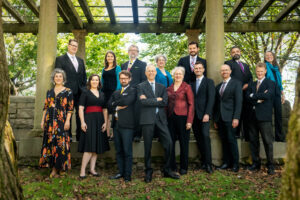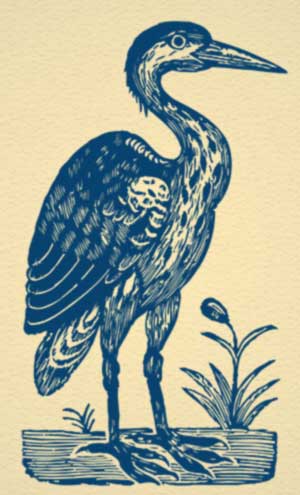Gramophone Magazine
May 2025
Blue Heron
Our monthly guide to North American ensembles
Founded 1999
Home Cambridge, Massachusetts
Blue Heron, the Boston-based choral ensemble specialising in early music, celebrated its 25th birthday last October. I caught up with Scott Metcalfe, its founder and Artistic Director. Asked what is distinctive about their ensemble, Metcalfe has no hesitation. ‘We’re very seriously nerdy about our sources and historical performance practice.’ Ad fontes, his equivalent might have said in quattrocento Italy. That knowledge can be difficult to obtain at times; every century you go back, things become murkier. But there’s nothing musty about their way of going about research. He describes their approach, refreshingly, as an adventure of discovery. ‘We’re like a [musical] laboratory, experimenting among various options.’
Metcalfe’s meticulous scholarship is always at the service of performance: he is eager to talk about the act of interpretation (and the research behind it) as a living process. I ask him for an example of how this works in practice, and he delves into linguistics. It’s important to explore historical modes of pronunciation, because a way of pronouncing suggests a way of interpreting. It matters how many syllables there are, how this or that vowel was said.
Serendipity favoured Metcalfe at the very start of his journey in 1999, just before Blue Heron’s first concert.  He discovered, by chance, in the Early Music Shop of New England in Brookline, Massachusetts, Nick Sandon’s Antico edition of the reconstructed Peterhouse partbooks, superlative examples of pre-Reformation English polyphony that had long been neglected. The partbooks came to form a signature part of their repertoire, and the fifth album in their series won a Gramophone Award in 2018.
He discovered, by chance, in the Early Music Shop of New England in Brookline, Massachusetts, Nick Sandon’s Antico edition of the reconstructed Peterhouse partbooks, superlative examples of pre-Reformation English polyphony that had long been neglected. The partbooks came to form a signature part of their repertoire, and the fifth album in their series won a Gramophone Award in 2018.
Metcalfe believes that scholars sometimes puzzle over 17th-century musical forms because they don’t have a detailed understanding of where it all came from. Monteverdi’s Orfeo (1607) doesn’t just suddenly happen. One can see all the elements that go to form opera, for instance, slowly build up over time. The madrigal tradition underlines that sung music can have dramatic and not just lyrical sense. The Concerto delle Donne, that influential Ferrara-based ensemble of professional female singers, privileged virtuoso vocal techniques and the kind of emotional delivery that would in due course constitute the operatic style. These are the kind of connections we need to unpack, he believes. It’s not a history of ruptures.
It strikes me repeatedly as our conversation advances how much a man of the quattrocento Metcalfe is, in the breadth of his commitment to integrating the arts. Poetry, rhetoric, philology, history, the visual arts: none of these are foreign domains to him, as none of them would have been foreign to the average Renaissance humanist. In 2011-12, Metcalfe programmed and directed an NYC-based ensemble, Tenet, to accompany a Met exhibition exploring Renaissance portraiture. Last year, Blue Heron reprised the idea for the programme in Cambridge, where art historian Jodi Cranston explored the connections between musical and artistic self-fashioning.
What of the future? It’s true that they sang Ockeghem’s work over seven seasons. ‘But there’s more of him’, Metcalfe laughs. In particular, he wants to explore all three versions of Missa Cuiusvis toni, a one-of-a kind work of great technical magnitude,which can be sung in three different modes.
Back in February, they performed Johannes Regis’s Missa L’homme armé. It was composed for St Michael’s Day in Cambrai, 1462: it matters what happened then so you can live it all afresh. Metcalfe was pleased to find in St Ignatius Episcopal Church, NYC, a statue of St Michael next to the altar, armed and armoured. They processed in accordingly, chanting; at the Kyrie, lyric polyphony burst forth. ‘You say dead composers’, he said, but ‘music is now’.
Hilary Stroh
gramophone.co.uk



